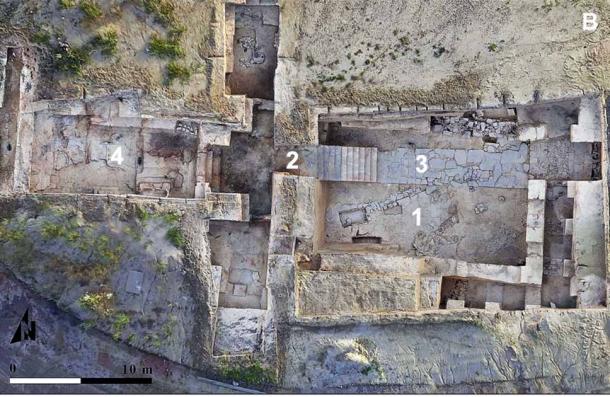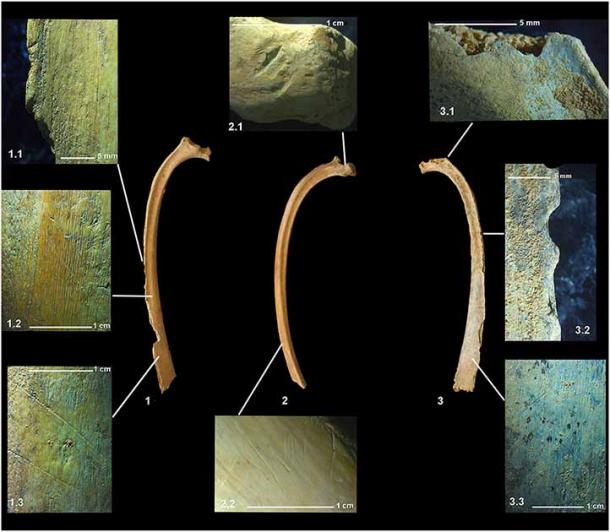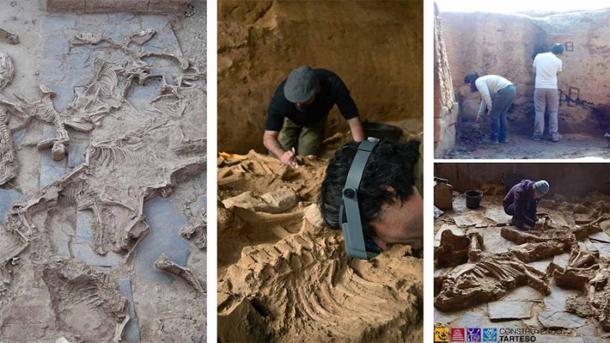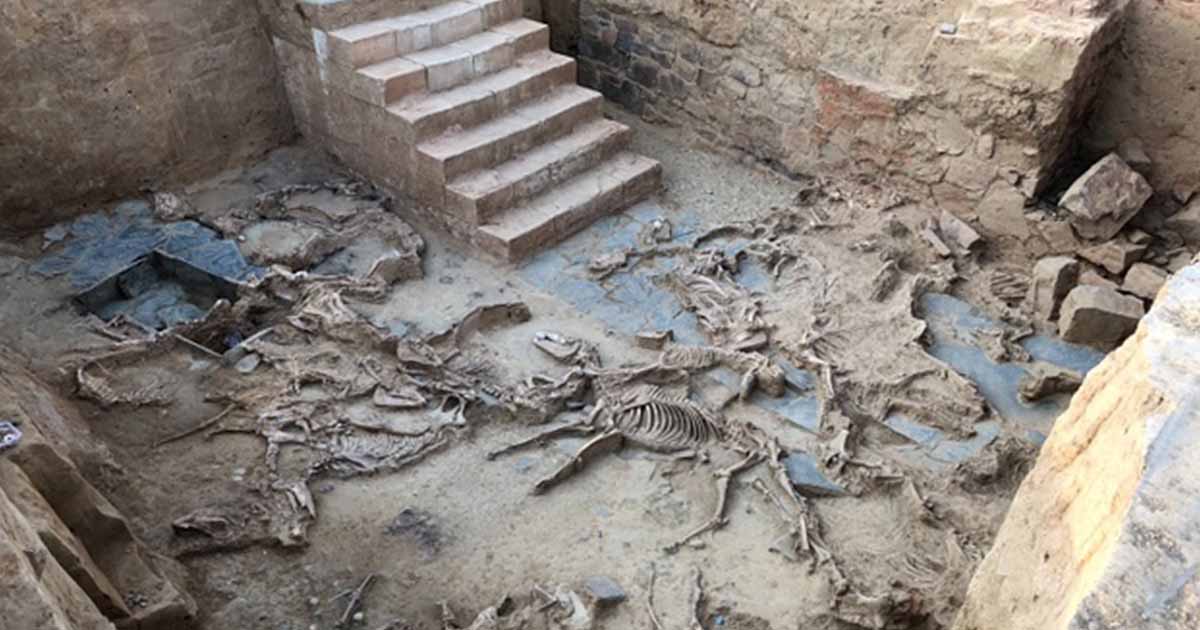Lost Mass Animal Sacrifice Rituals Revealed at Tartessos Site in Spain
Archaeologists and other scientists affiliated with several institutions in Spain have revealed a startling fact about an Iron Age site known as Casas del Turuñuelo, which is located in southern Spain close to the Mediterranean coast. It seems this ancient site was used repeatedly to complete animal sacrifice rituals by the Tartessos culture, an enigmatic early Iron Age civilization that lived in the region until approximately 2,500 years ago.
While it has long been known that large-scale animal sacrifice was practiced by people living in Europe in the first millennium BC, it is actually quite rare to find Iron Age sites that provide proof that this was so.
Evidence of Animal Sacrifice at Casas del Turuñuelo
In this enlightening new study, a team of researchers led by archaeologist Maria Pilar Iborra Eres from the Valencian Institute of Conservation and Restoration (IVC+R) examined the remains of animals that were found buried inside a ruined structure at Casas del Turuñuelo.
This building had been intentionally destroyed before being buried beneath a 20-foot (six-meter)-tall burial mound sometime in the fifth century BC. The smashing of the building and the entombment of its contents suggests the Tartessian people knew they would not be using this place again. In fact, the date of its burial coincides with the disappearance of the entire culture from the region.
- Human Remains from the Tartessos Civilization Found at Site of Animal Slaughter
- Mesoamericans at Teotihuacan kept Ferocious Animals Captive and May Have Fed them with Humans
Excavations beneath the mound produced the remains of 52 sacrificed animals, which were eventually identified as horses, cattle, pigs and a single dog. Adult horses made up the bulk of these animal sacrifices. In total approximately 6,770 individual bones were recovered from the site. From the arrangement of the animal bones, the researchers were able to draw some conclusions about how the animal sacrifices were performed.

Aerial view of the Casas del Turuñuelo site, where evidence of animal sacrifice conducted by the Tartessos culture was uncovered. (Iborra Eres, et. al. / CC BY 4.0 DEED)
Was Animal Sacrifice Liked to Ritual Feasting?
Researchers were able to determine, for example, that the animal sacrifices were performed in three successive mass phases. In the first two, the animals were simply killed before being buried, which is revealed by the fact that the skeletons of the creatures were mostly still intact. But skeletons associated with the third phase showed unmistakable signs of being processed, meaning their meat was removed before they were buried. This suggests the last mass animal sacrifice was associated with a ritual meal of some type.
“This study thus sheds light on both the sequence of the animal sacrifices and the protocols linked to rites accompanied by the celebration of banquets,” the study authors wrote, in an article about their research appearing in the journal PLOS ONE. “This study thus advances notions serving to contextualize ritual animal sacrifices in the framework of practice observed at other Iron Age sites in the Iberian Peninsula and elsewhere throughout Europe.”
The Spanish researchers note that the sacrificial space must have been used multiple times over a period of many years. It is possible that many ritual mass sacrifices occurred there. In some cases, the animal bones were removed to be buried or otherwise disposed of elsewhere.

The animal remains evidenced cut marks and human bites leading experts to conclude that the remains were part of animal sacrifice rituals and possible ritual feasting. (Iborra Eres, et. al. / CC BY 4.0 DEED)
Speculation About the Role of Animal Sacrifice Within Tartessos Culture
The archaeologists say the practices of the Tartessians at Casas del Turuñuelo were unusual for two reasons. On the one hand, they apparently took great care to see that only adult animals were sacrificed (could these have been older animals that were sick or near death anyway?). On the other, because they sacrificed so many horses, which is not something seen with other Iron Age cultures.
Since the Tartessos culture likely relied on horses for transportation and work, perhaps these animals were sacrificed so they could join their dead masters in the afterworld, where their presence would presumably be welcomed.
- The Furry Ones Slain And Sacrificed To Bloodthirsty Deities
- The Exotic Menagerie: The Wild Animals Slaughtered in Gladiator Games
Ideas like this are highly speculative. But speculation is necessary when the subject is the beliefs and practices of the enigmatic Tartessos culture. Little is known about who they were and what they believed, leaving archaeologists and historians to ponder the true meaning of any discovery linked to these long-lost Iron Age people.

Archaeologists at work at the Casas del Turuñuelo site in Spain where evidence of mass animal sacrifice has been uncovered. (Construyendo Tarteso / CC-BY 4.0)
Searching for the Truth about the Mysterious Tartessos Culture
The Tartessos culture occupied the Iberian Peninsula in what is now southwestern Spain from the ninth through the early fifth century BC. Based on a series of archaeological discoveries, it seems the culture built their economy around their access to valuable metals, including gold, copper and tin. This made them an important trading partner for the Phoenicians, who lived along the shores of the eastern Mediterranean.
In addition to their skills in metallurgy, the Tartessians were also master shipbuilders, which allowed them to establish long-distance trading relationships all around the Mediterranean. The Tartessians were the first Iberian civilization to make contact with older societies in northern Africa, the Middle East and southern Europe, and their metaphysical and religious beliefs may have been influenced to some extent by these contacts.
By the fifth century BC the Tartessians had vanished virtually without a trace. The reasons for their disappearance are unknown, since excavations at Tartessian sites have not produced evidence to show they were invaded or conquered by military force. In every sense their presence in the archaeological record is a shadowy one. This can help explain why any find that sheds light on their cultural practices, such as this recent discovery related to animal sacrifice, can be considered a significant one.
Top image: Evidence of animal sacrifice, many of them horses, at the courtyard of the Casas del Turuñuelo site in Spain. Source: Construyendo Tarteso / CC-BY 4.0
By Nathan Falde

















